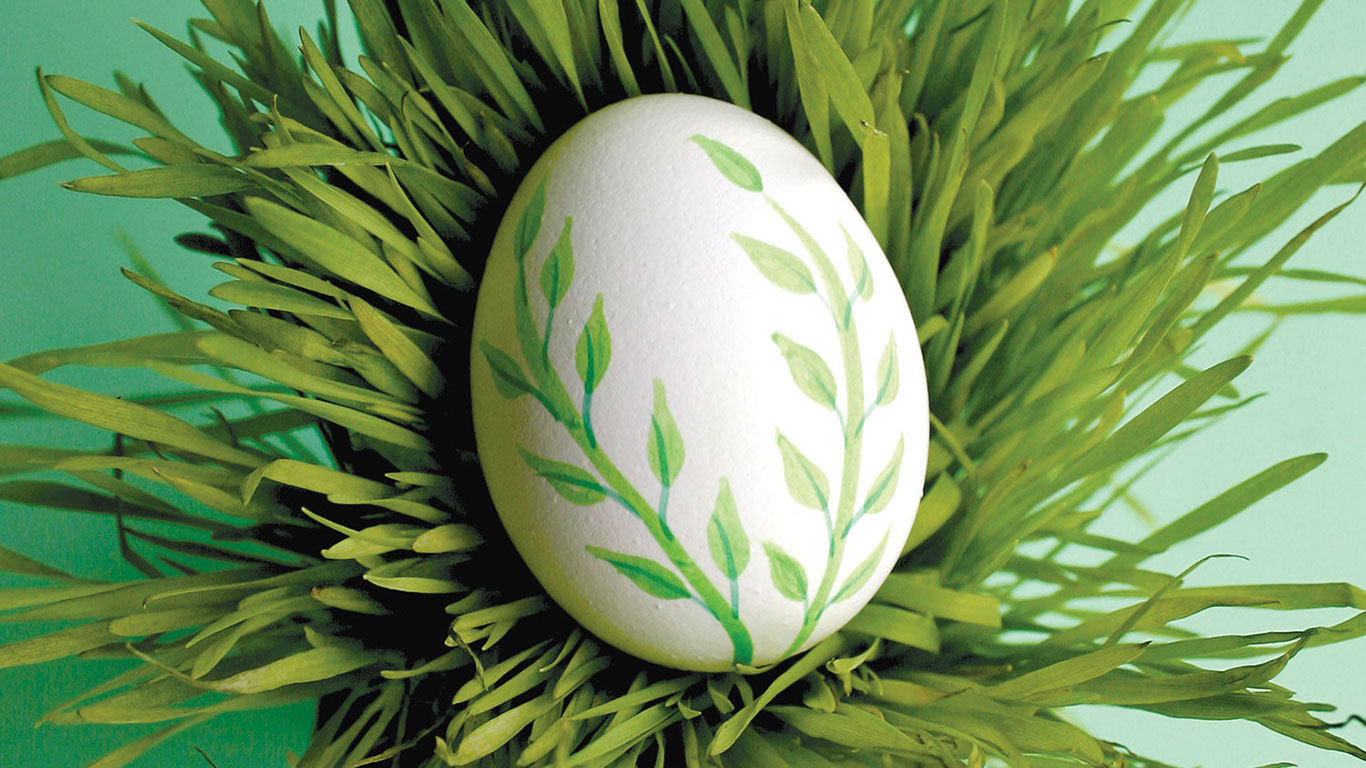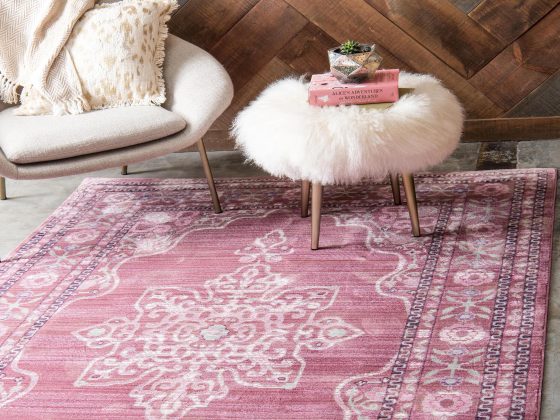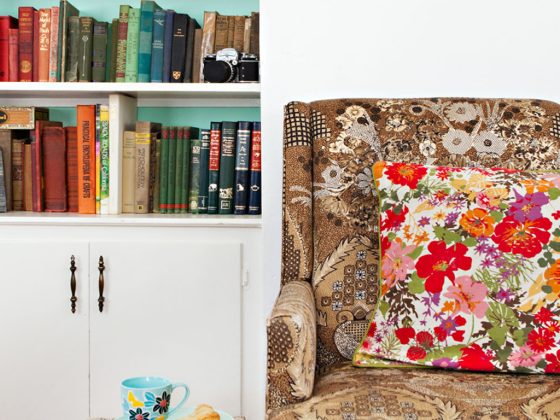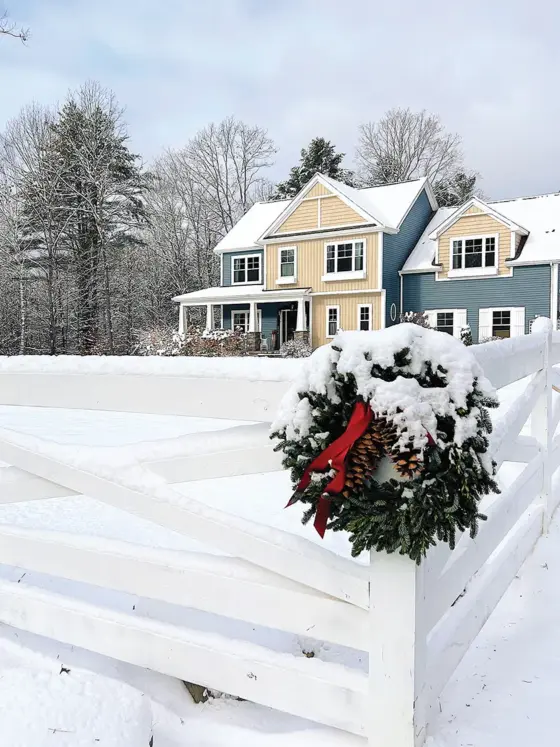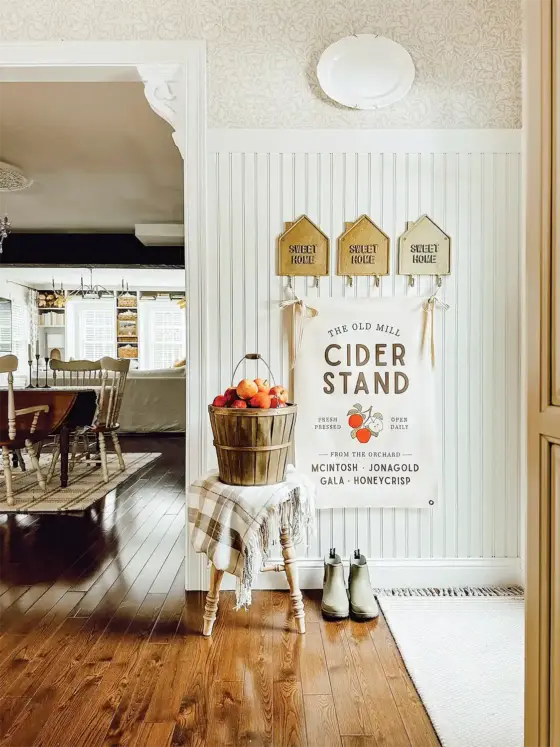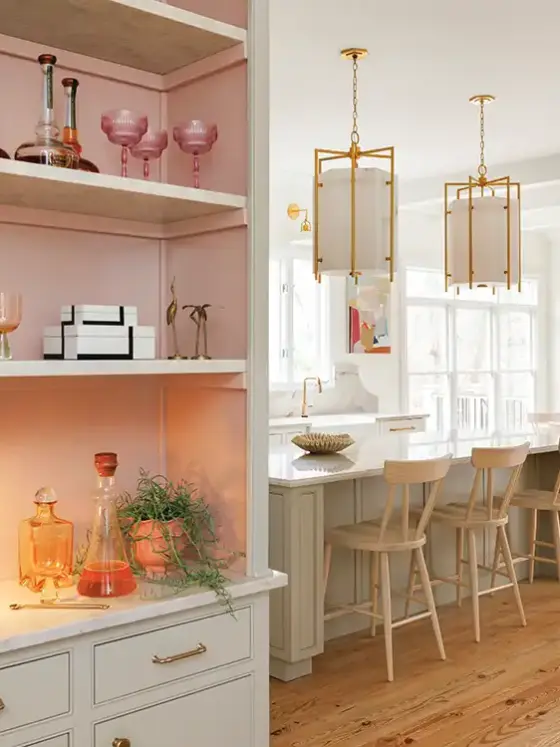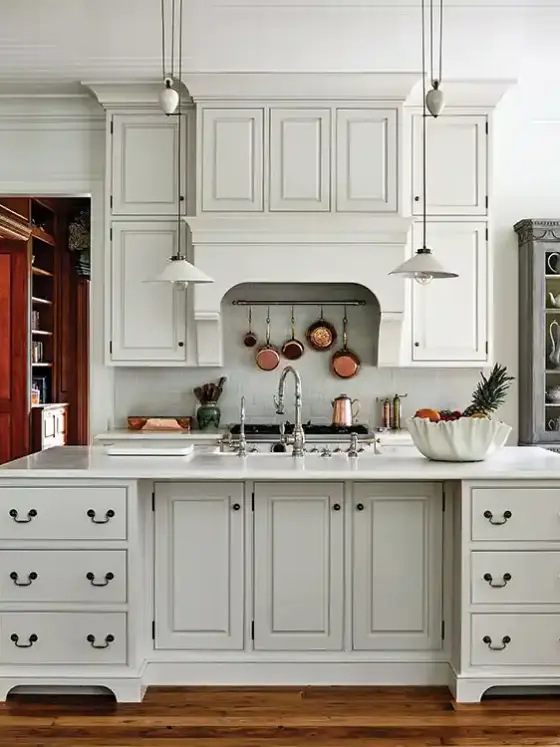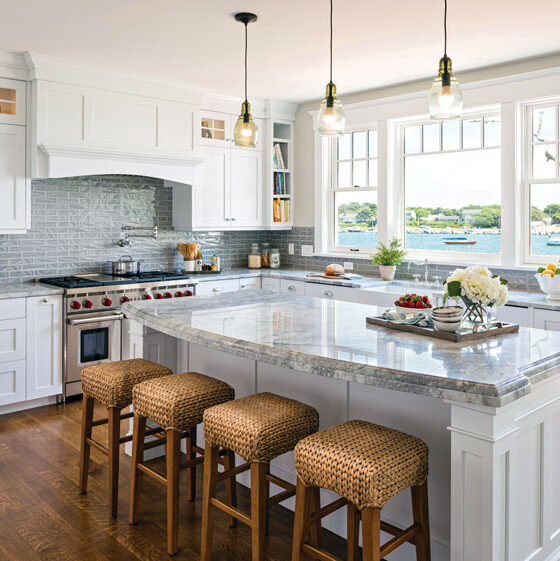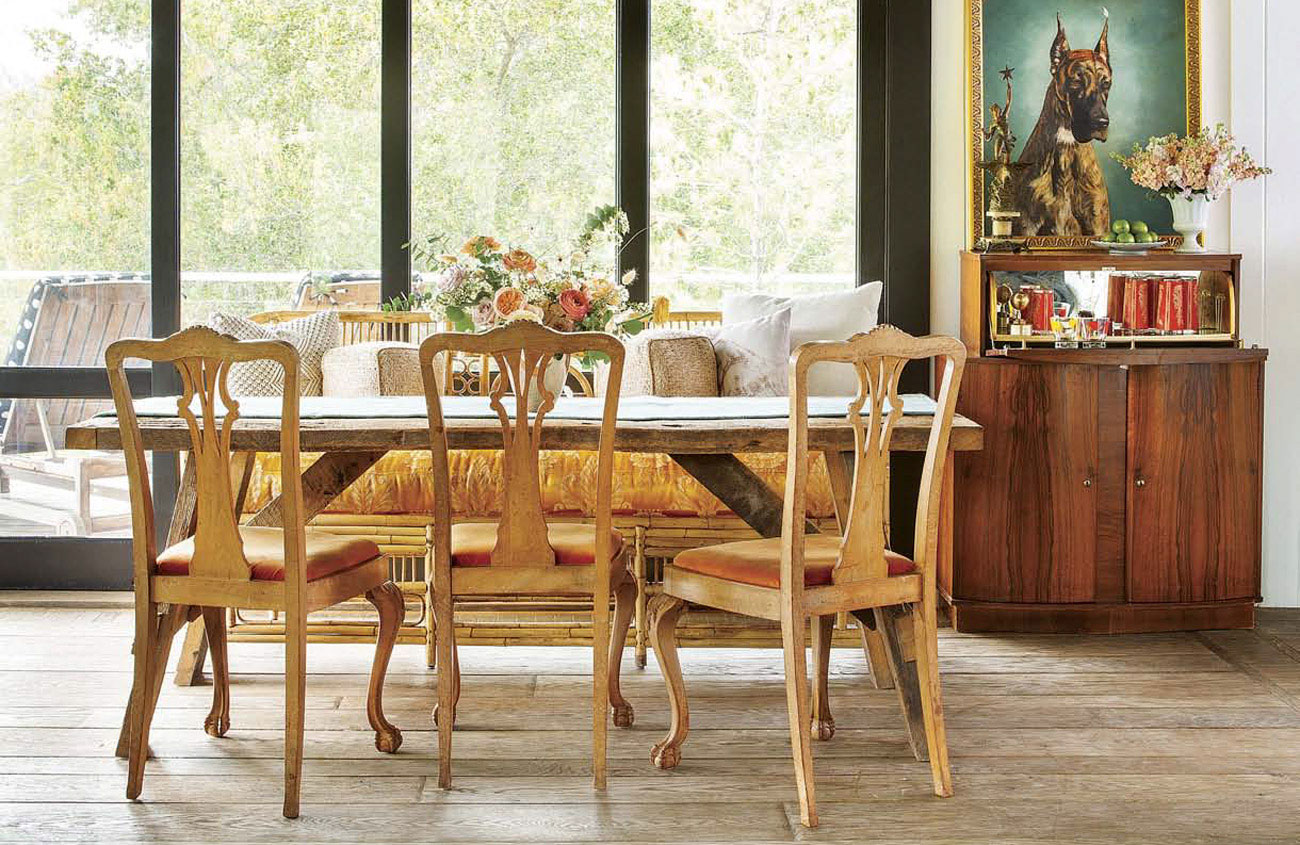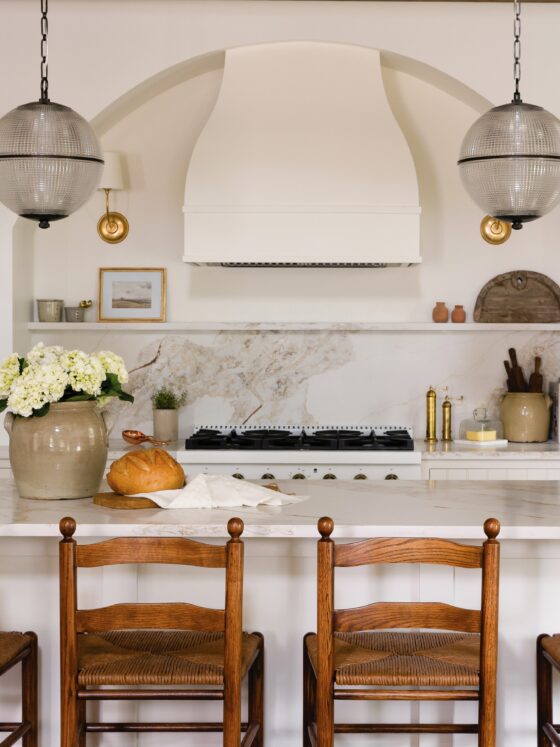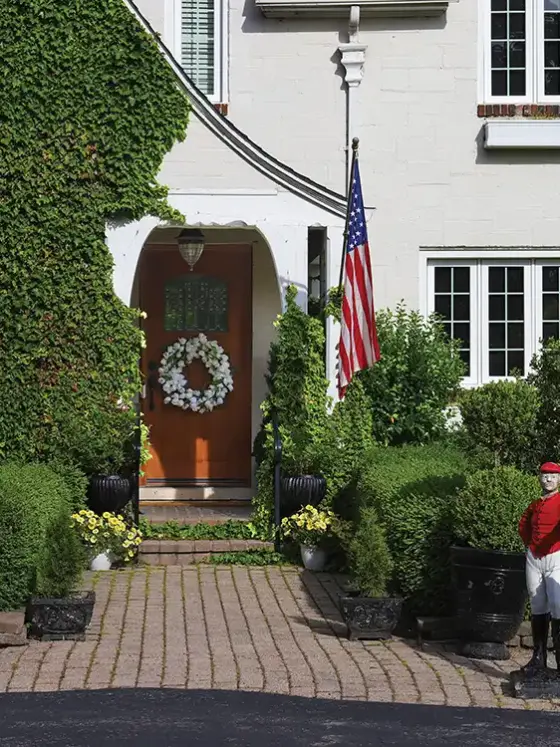Ah, the venerable egg. There is no more perfect time to reflect on decorating with this timeless symbol than springtime. Certainly spring is the time to decorate Easter eggs, and many have enjoyed the fun of dipping a hard-boiled egg into a warm bath of color. Some cultures have taken this age-old pastime to a whole other level.
Pysanka, Ukrainian Easter eggs, are elaborately decorated with symbols and colors. The technique uses a wax and dye method similar to batik. Most famous perhaps are intricate Fabergé eggs, richly ornate in gold and enamel. The first one was created in 1884 by the House of Fabergé under master goldsmith Peter Carl Fabergé; the Russian czar gave it to his wife as an Easter gift.
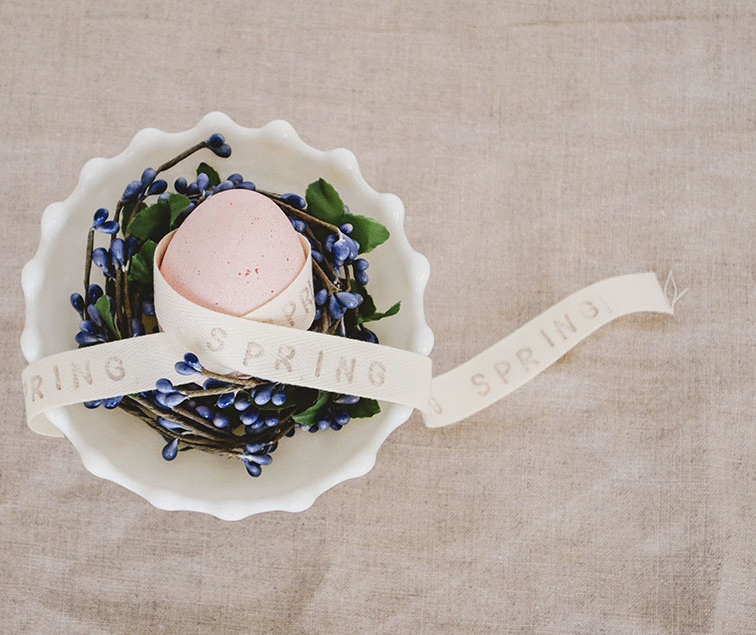
And then, of course, there is imperfect perfection—the simplicity of nature’s paintbrush on real birds’ eggs. It’s good to know that egg artists today use only farm-raised eggs for their craft, according to The International Egg Art Guild. In fact, federal law prohibits the use of wild bird eggs. But what about decorating with eggs?
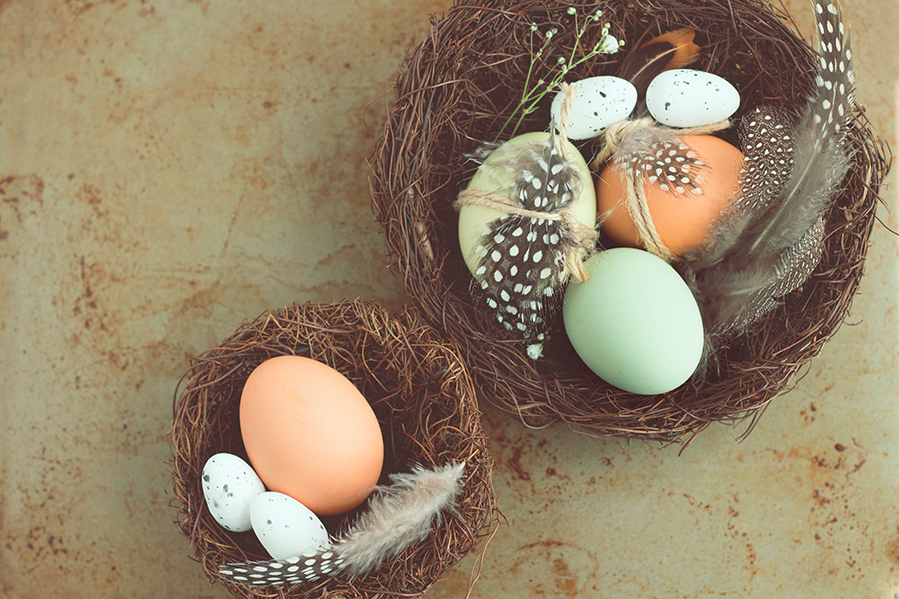
Egg Aesthetics
Decorating with real eggs or with items inspired by them can bring an element of spring and renewal to your home. There are artists who recreate and elevate nature’s beauty in prints, textiles—even soaps. New York designer Jim Schatz makes a ceramic egg night light that comes in myriad colors and is covered with tiny holes. When lit, it creates “stars,” as on a crisp spring night, that appear on your walls. Many have been inspired by the timeless blue of a robin’s egg—in paint, bedding and various décor items. Nigella Lawson’s serenely-shaped blue egg bowls and platters will make you smile each time you reach for them. Get out in the spring air for a refreshing hike, and you may even come across some eggshells left behind by a newly-hatched bird. Gently wash them with dish soap, rinse and dry them thoroughly before displaying.
Turn plastic Easter eggs into a year-round décor accent by painting them with chalk paint in muted tones. Display them in bowls, on tabletops and in other decorative vignettes for an earthy chic look.
Whether you’re displaying hand-decorated eggs or showing off an egg’s natural beauty, try using egg cups, juice glasses, footed glasses, salt cellars and small bowls as well as ready-made egg stands to vary height and visual interest.
In general, keep your displays simple so the beauty of nature’s eggs or decorated eggs can shine.
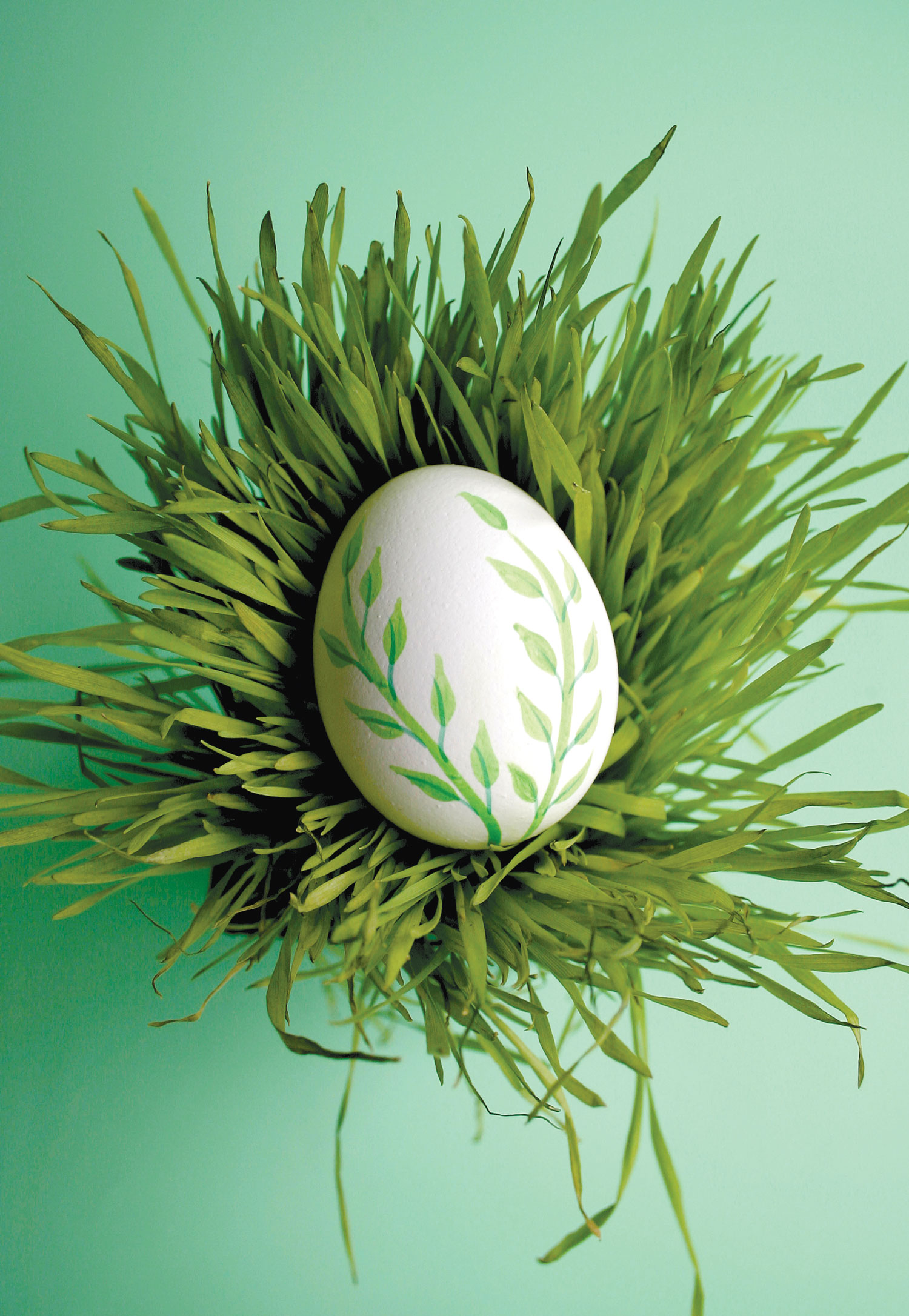 Egg Coloring for Adults. To make “watercolor vines in grass” as Matthew Mead describes in Easter Eggs, decorate a hen’s egg using watercolors in spring green, and display it on a bed of wheat grass, easily found in health food stores. Keep hard-boiled eggs refrigerated until you’re ready to display and eat them. For a longer-lasting display, blow out the inside of the egg, wash it carefully with soapy water and dry it thoroughly before decorating.
Egg Coloring for Adults. To make “watercolor vines in grass” as Matthew Mead describes in Easter Eggs, decorate a hen’s egg using watercolors in spring green, and display it on a bed of wheat grass, easily found in health food stores. Keep hard-boiled eggs refrigerated until you’re ready to display and eat them. For a longer-lasting display, blow out the inside of the egg, wash it carefully with soapy water and dry it thoroughly before decorating.
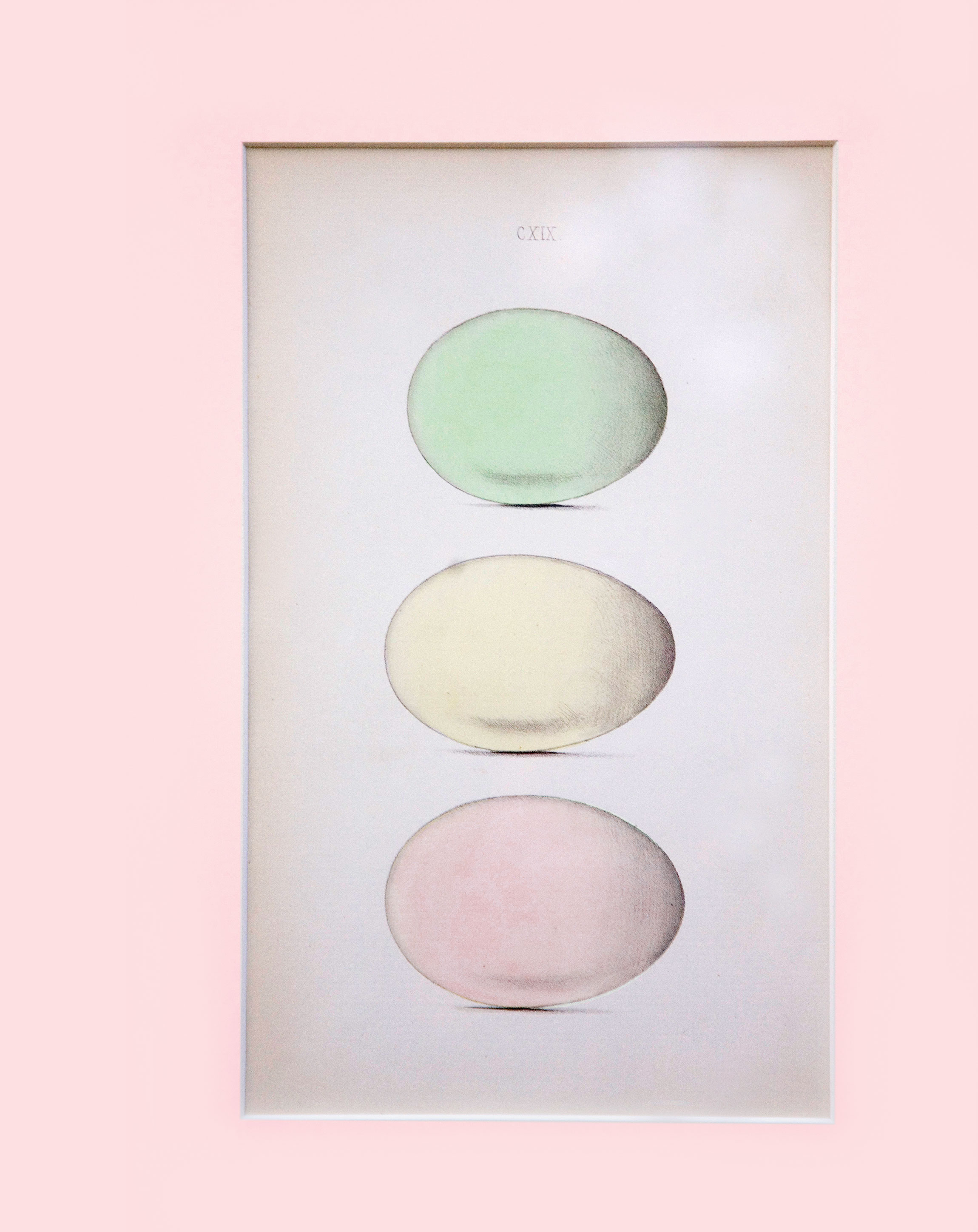
Artfully Inspired. Eggs have been a spring motif since at least the 17th century. Set your sights on collectible egg prints like this one. PRO TIP: share your hunt idea with your local antiques dealer and have him or her keep an eye out for new finds.
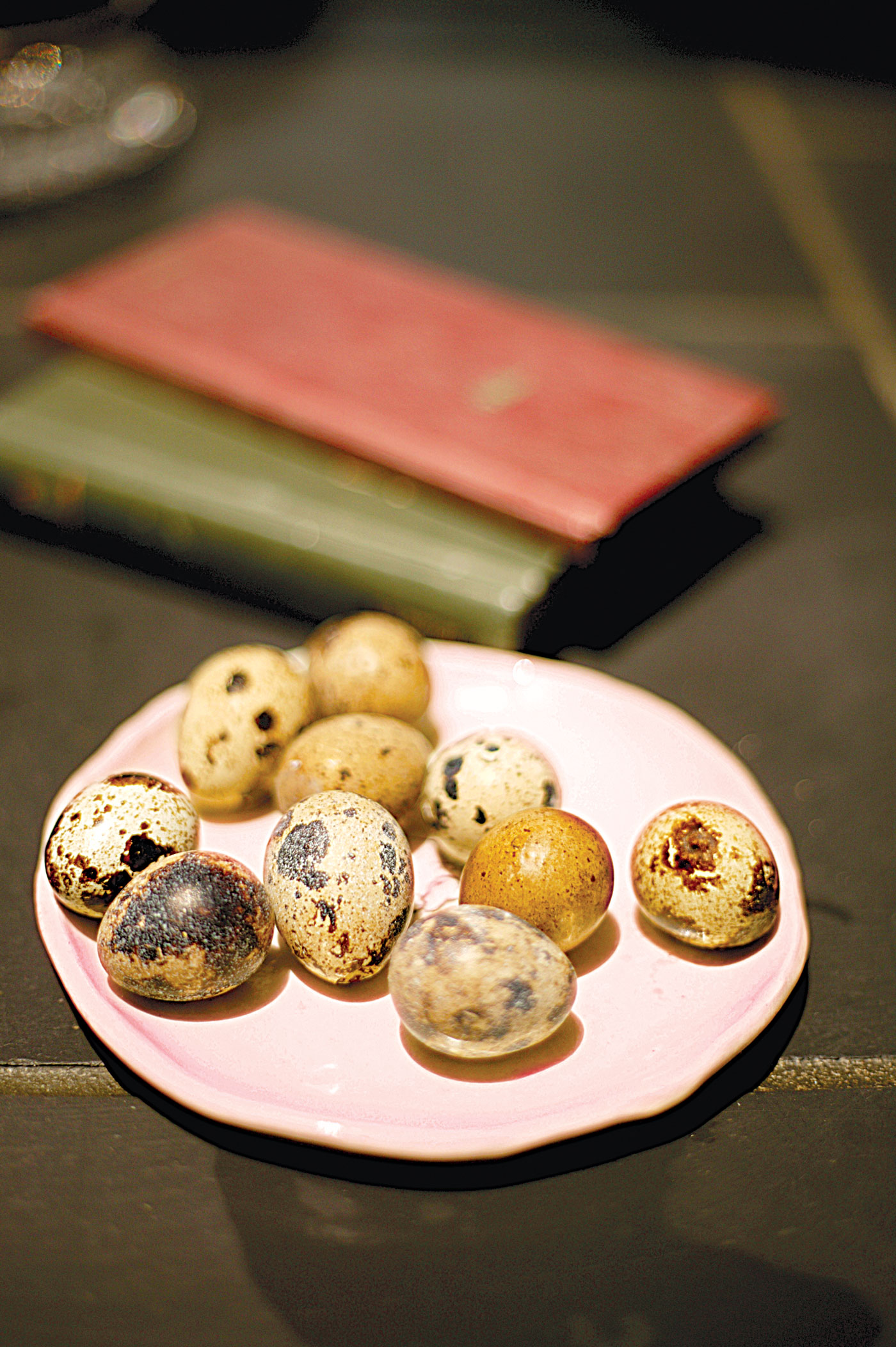 Springtime Gems. Unadorned except by nature, quail eggs are like exquisite jewels when arranged against the backdrop of a white ceramic plate. You can purchase quail eggs at most specialty markets.
Springtime Gems. Unadorned except by nature, quail eggs are like exquisite jewels when arranged against the backdrop of a white ceramic plate. You can purchase quail eggs at most specialty markets.
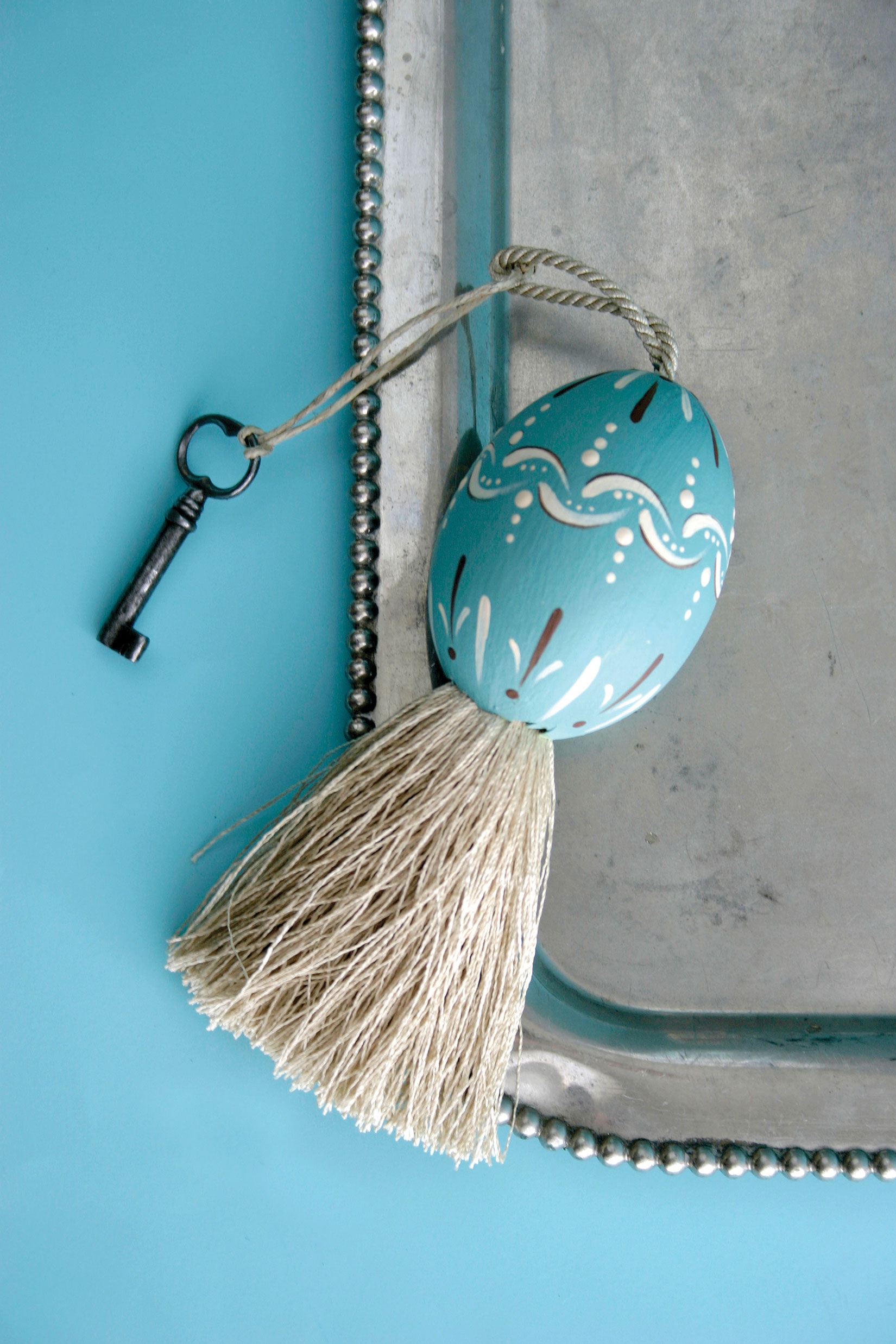 Egg-cellent. A decorated egg can add panache to a tassel. Hang one with a key from a favorite armoire or desk drawer. Use acrylic paints and a stencil to get a finely finished look.
Egg-cellent. A decorated egg can add panache to a tassel. Hang one with a key from a favorite armoire or desk drawer. Use acrylic paints and a stencil to get a finely finished look.
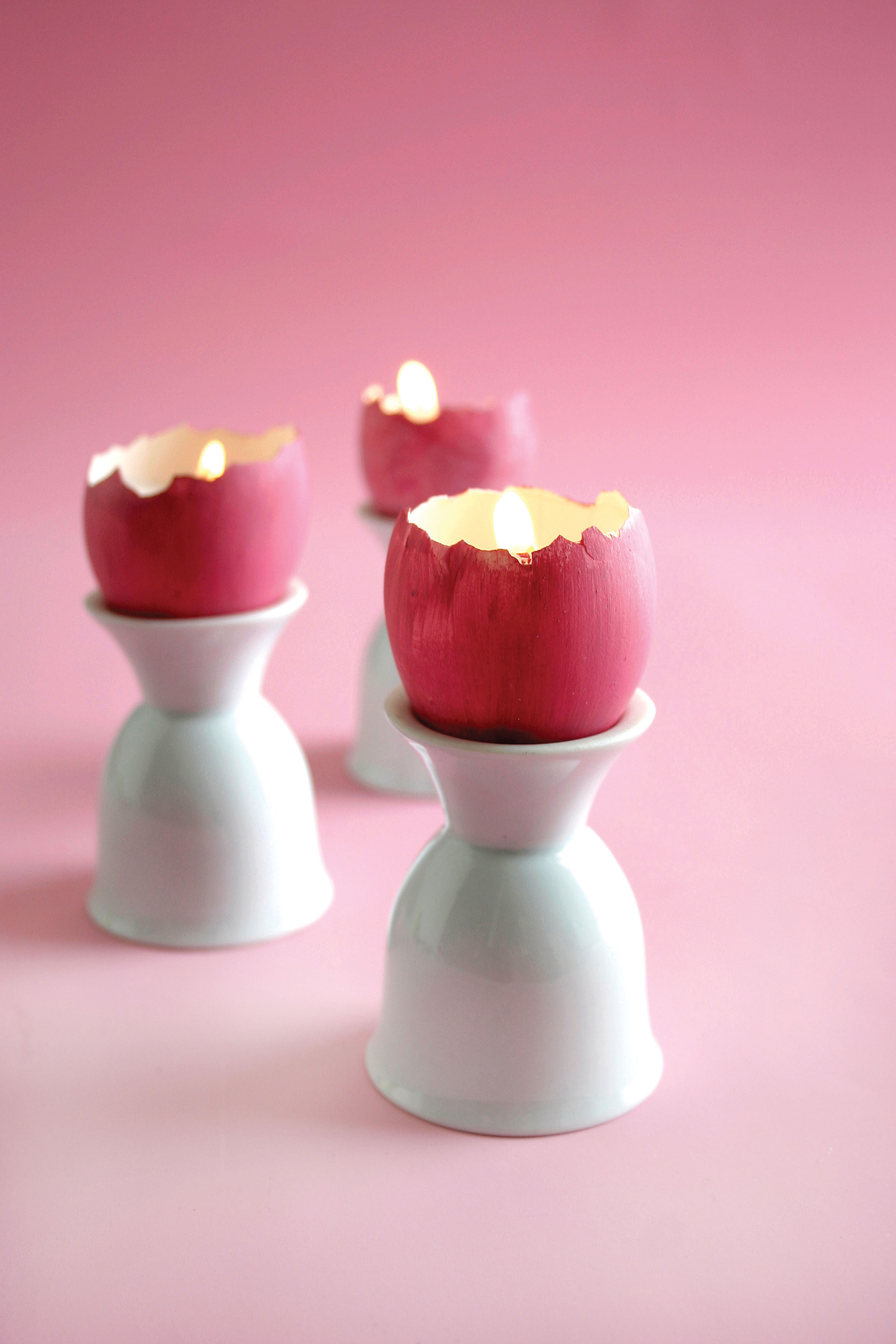
Egg Décor Scramble. Use extra-large eggshells, blown out and dried; then paint them with acrylic color or dip them in a dye bath. Carefully remove the top third of the shell. Add tealight candles to make “candles on the half shell,” and set them atop egg cups before lighting.
For more about “Candles on the Half Shell,” “Watercolor Vines in Grass,” and “Cupboard Tassel,” as well as more decorating crafts, see Easter Eggs: 40 Fabulous Projects for the Whole Family by Matthew Mead, published by Chronicle Books. Photographs copyright © 2007 by Matthew Meade except where otherwise stated. Project text copyright © 2007 by Downtown Bookworks, Inc.

